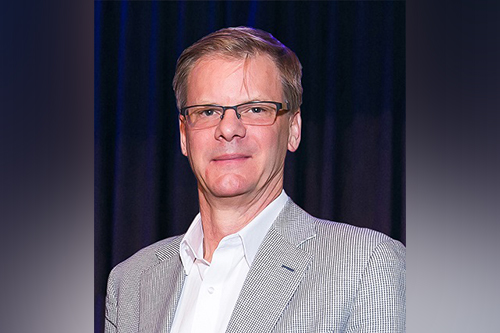
Tomorrow, some of education’s biggest heavyweights, including Todd Whitaker, Michael Fullan, Alma Harris, Lee Watanabe-Crocket, Victoria Brownlee and Dr Douglas Fisher, will converge at ACEL’s Vision and Voice conference in Sydney.
The conference theme of ‘Vision and Voice – Setting the Learning Agenda’ provides the platform for international and national speakers to share their expertise, research and best practice in bringing these two key elements to life.
Dr Douglas Fisher – a professor of educational leadership at San Diego State University and a teacher leader at Health Sciences High & Middle College – will be addressing the conference on how collective efficacy and assessment capable learners are transforming outcomes in classrooms around the world.
Below, The Educator talks to Dr Fisher to find out more about the impact this is having.
TE: Your keynote at the upcoming conference is on Assessment capable learners/teachers. Can you tell us about the importance of this topic in the context of professional development and its value to K-12 school principals?
DF: Assessment-capable learners are not just students who do well on tests (they do but that’s not the point). They know stuff and are able to apply their knowledge. When students become their own teachers and when they accept the challenge of learning, great things can happen. Don’t get me wrong – they still need teachers, but the role of the teacher is different when the focus is on assessment-capable learners. To start, assessment-capable learners need to know where they are in the learning journey – their current level of performance or understanding. And their teachers play a critical role in that. These students also know where they are going, in part because their teachers are clear about learning intentions and success criteria. Students also select tools for their learning, which means teachers provide students with a few options for learning. I did not say that we provide 25 different ways to learn, but there is not just one way to learn things. Consider study skills as an example. There are many right ways to study and some wrong ways. Assessment-capable learners select from a range of tools that they know will help them learn. Further, assessment capable learners monitor their progress and seek feedback about their learning. They do not wait around passively for their teachers or peers to provide feedback. They seek it out and thus are much more likely to take that feedback to heart and learn something new. Of course, this means that teachers have to provide students with tools to monitor their progress and refrain from jumping in and telling students when they are wrong. A phrase we like, from John Hattie, fits here. These students know what to do when they don’t know what to do. In other words, when they are stuck, they have plans in mind. And finally, assessment-capable learners recognize when they learn something and are able to teach others. And who doesn’t want that to happen in a classroom? In terms of the principal, our roles are to support teachers as they embrace student responsibility. Leaders provide support for teachers to ensure students know where they are in the learning journey and where they are going, how to select tools and monitor learning, how to solicit feedback and make changes in the learning plans. To my thinking, it’s a role change that we’re talking about but one that does not remove the important role that the teacher plays in learning.
TE: Is there a particularly encouraging example of collective efficacy you’ve seen at work in the Australian K-12 space or overseas that you feel Australian school leaders could learn/draw inspiration from?
DF: I think that the focus on collective efficacy has been definitional in nature, in a large part because we needed time as a profession to consider the concept and the factors that contribute to the collective. But I think the time is ripe to explore school-based systems for building collective efficacy. I am particularly interested in collective efficacy cycles or an ongoing set of experiences that build the power of the collective. The schools that have a high sense of collective have some common patterns. First, they start with a shared goal. Over time, teams set increasingly challenging goals for themselves because they have evidence from the past that tells them that they will be effective. Once they have a goal, teams engage in learning. There are all kinds of ways that they do this, but often they need access to information to achieve their goal. If they already knew what to do, they wouldn’t need to establish the goal. Importantly, the third phase is safe practice. During this phase, teachers are trying out the ideas from their team. They make mistakes but they collective evidence to identify what works best. Without this safe practice, most people will not innovate, even with evidence-based practices. Instead, they stick with things that they believe worked in the past. Following this safe practice, teachers open up and become more public with their practices, sharing with their team members and even the larger school. As they do so, they monitor and adjust to ensure that the goal is met. It’s this cycle that occurs over and over across the school year that builds the collective. Success is motivating and teams see their impact as evidence that the process is working, and the cycle starts anew.
The ACEL Educational Leadership Conference will contribute 14 hours and 25 minutes of NESA Registered PD addressing 6.2.2 from the Australian Professional Standards for Teachers towards maintaining Proficient Teacher Accreditation in NSW.


